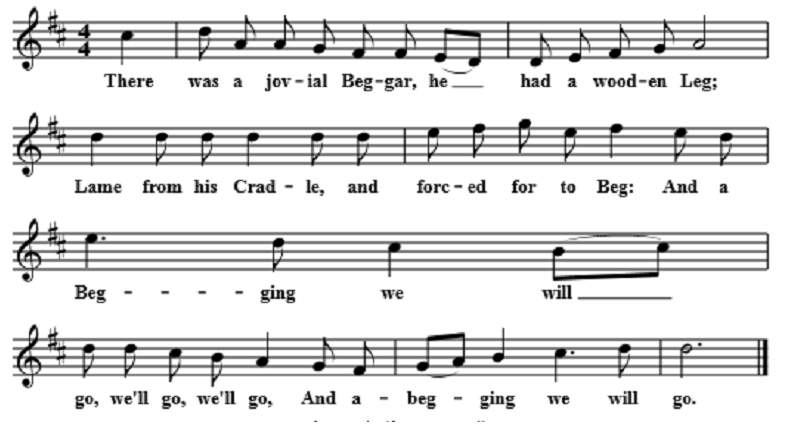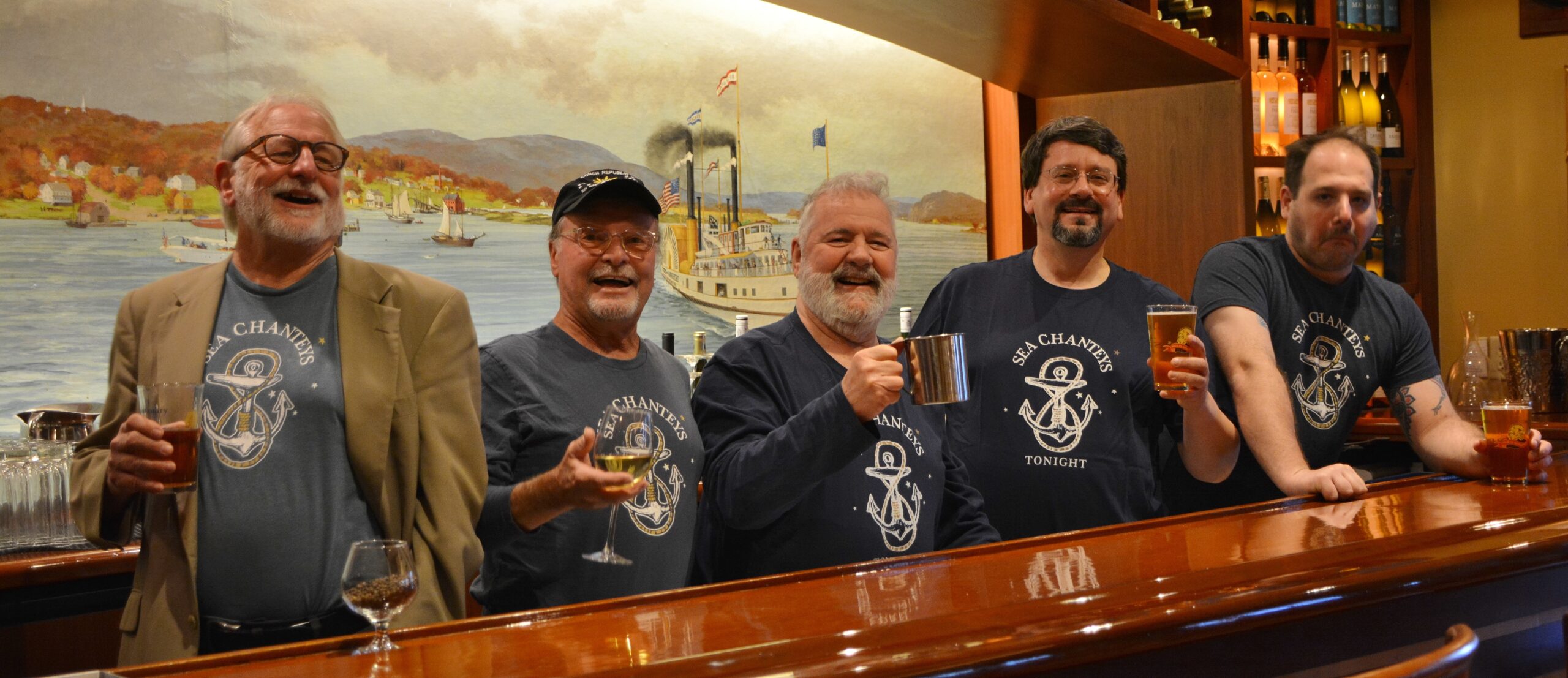This song originates with the 1641 ballad opera “A Jovial Crew” and is the chorus to a song therein called “The Beggar’s Chorus”. The song is sometimes called “The Jovial Beggar” and is attributed to a one Richard Brome; this ballad opera was supposedly the last one to be performed in England before the outbreak of the English Civil War. By the mid-19th century, many versions manifested in folk songs and broadside ballads. The melody utilized by Martin Carthy is a bit more somber with lyrics grown from the original, and it is the version that Cliff sings, while the 1683 production melody was a bit “brighter”.
Jos. Morneault

The 1992 republishing of the 1641 ballad opera.
. Am C G Am
Of all the trades in England the beggin’ is the best
. Am C G
For when a beggar’s tired he can lay him down and rest
Chorus:
. G
And a-beggin’ I will go
. Am
And a-beggin’ I will go
I’ve a pocket for my oatmeal and another for my salt
I’ve a pair of little crutches that should see how I can bolt
There’s patches on my fusty coat and a black patch on my eye
But when it comes to tuppenny ale I can see as well as thee
My britches they are no but holes but my heart is free of care
As long as I’ve my belly full my backside can go bare
I’ve been deaf at Duckinfield and I’ve been blind at Shaw
And many’s the right and willing lass I’ve bedded in the straw
There’s a bed for me where’er I lie and I don’t pay no rent
I’ve got no noisy looms to mind and I am right content
I can rest when I am tired and I heed no master’s bell
You men’d be daft to be a king when beggars live so well
(repeat first verse)
The Beggars Chorus in THE JOVIAL CREW, from A Jovial Crew by Richard Brome. This melody put to the lyrics in 1683; Printed for J. Clerk at the Horshooe in West-Smithfield. For similarity of lyrics, the first verse in the above version was added later. Look at the verses in the graphic below of the broadside ballad sheet to see the similarity.


And here is a vid of the original version on the song with its happier sounding melody, before the “folk process” begat numerous versions and melodies to this tale…
